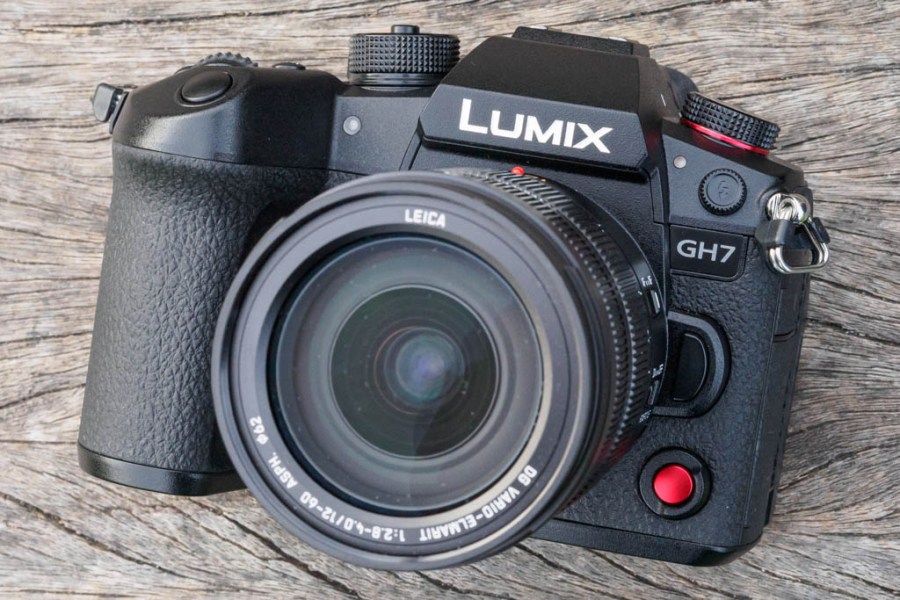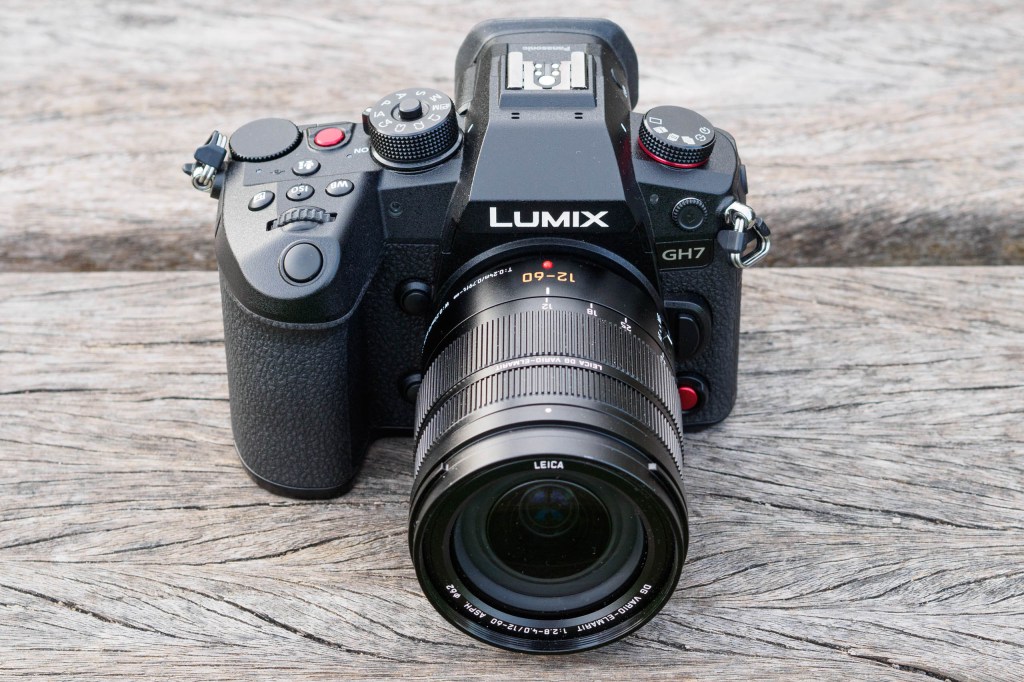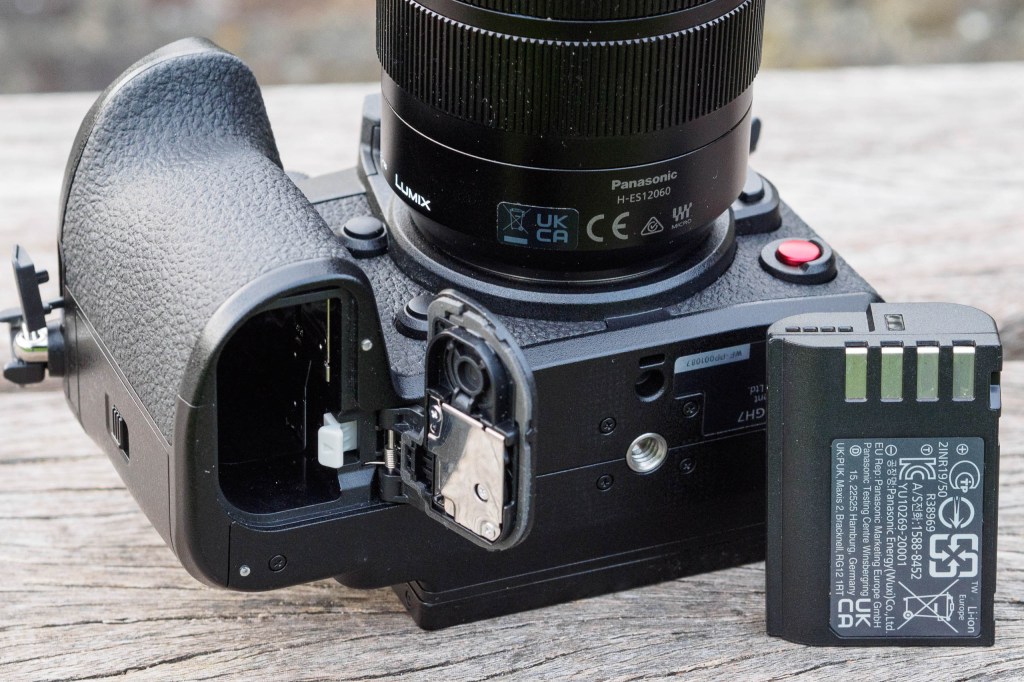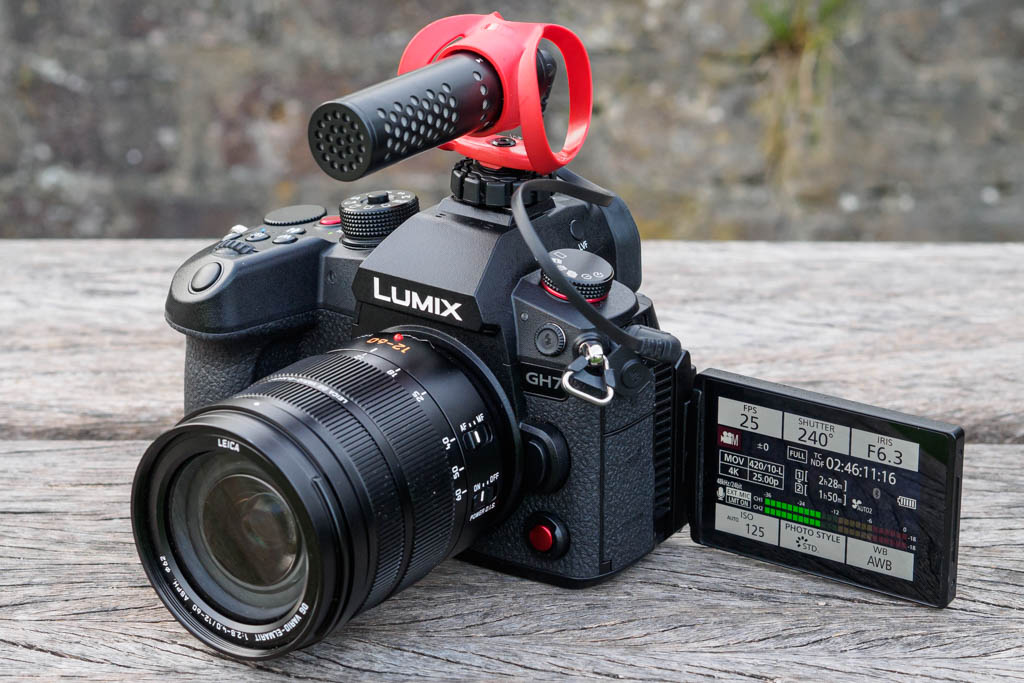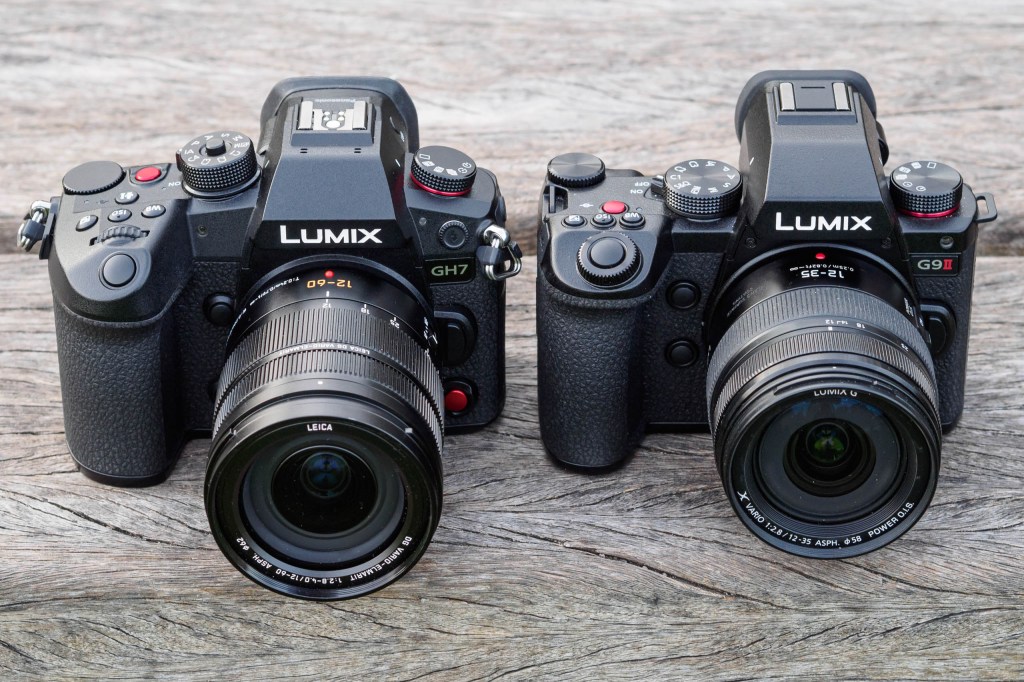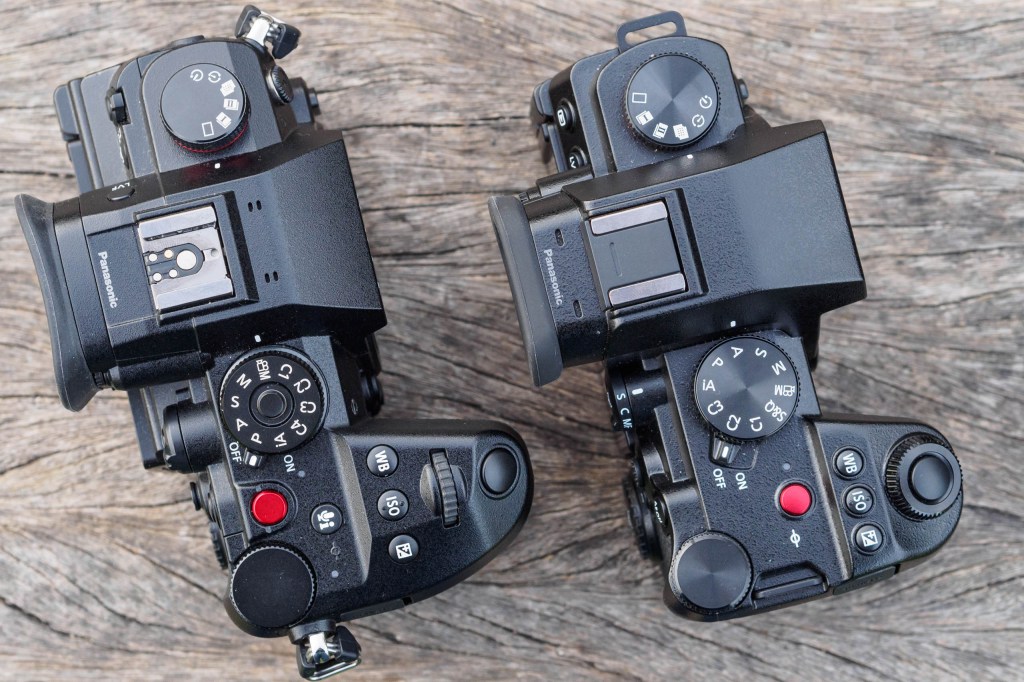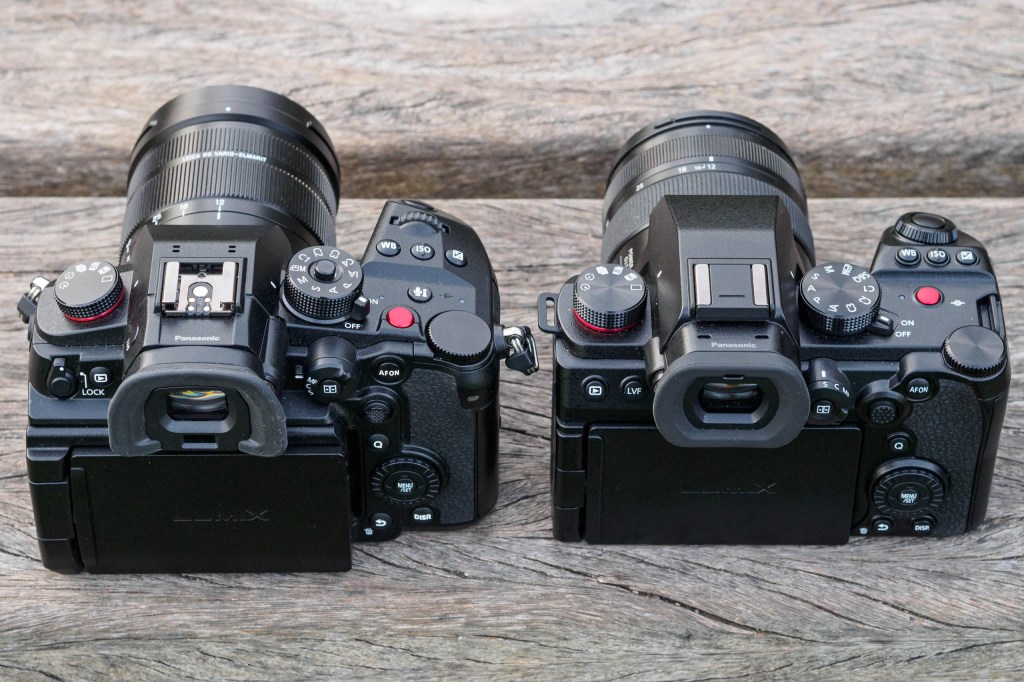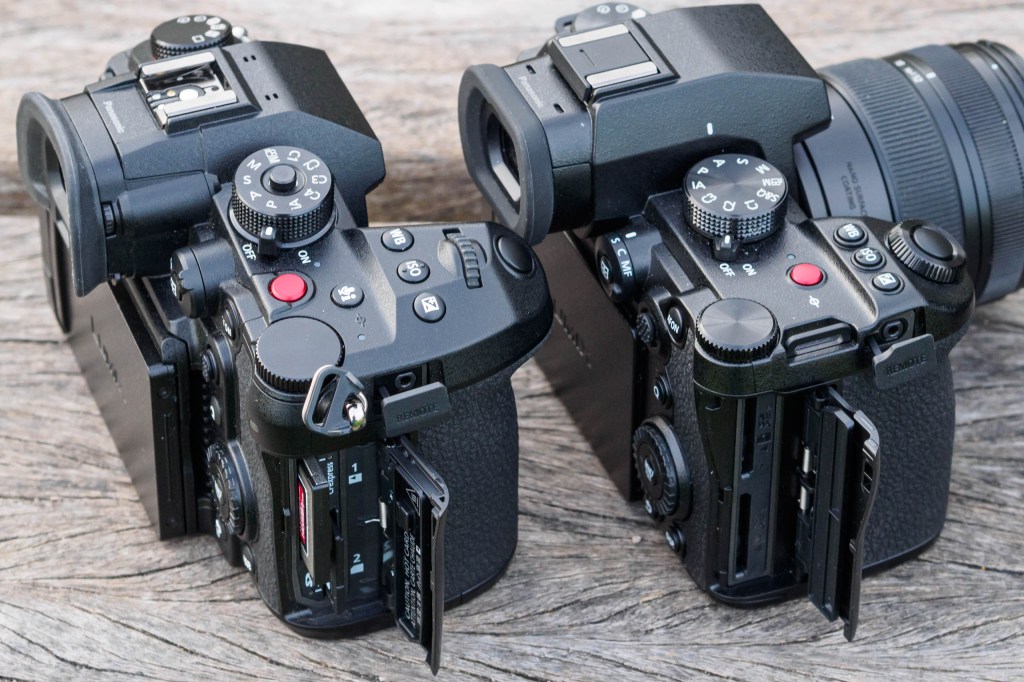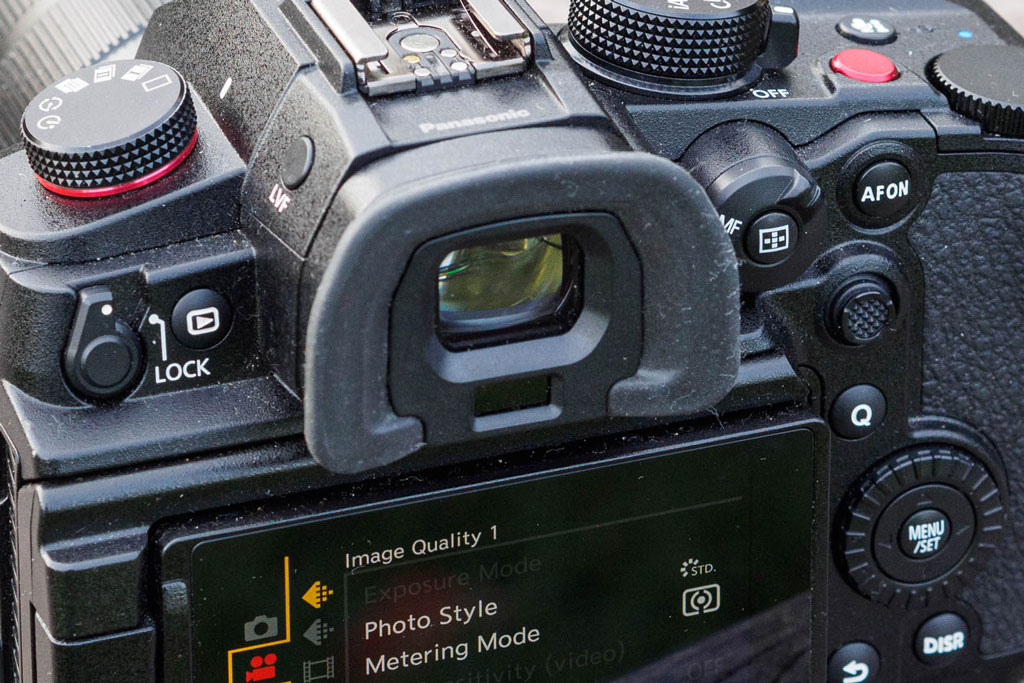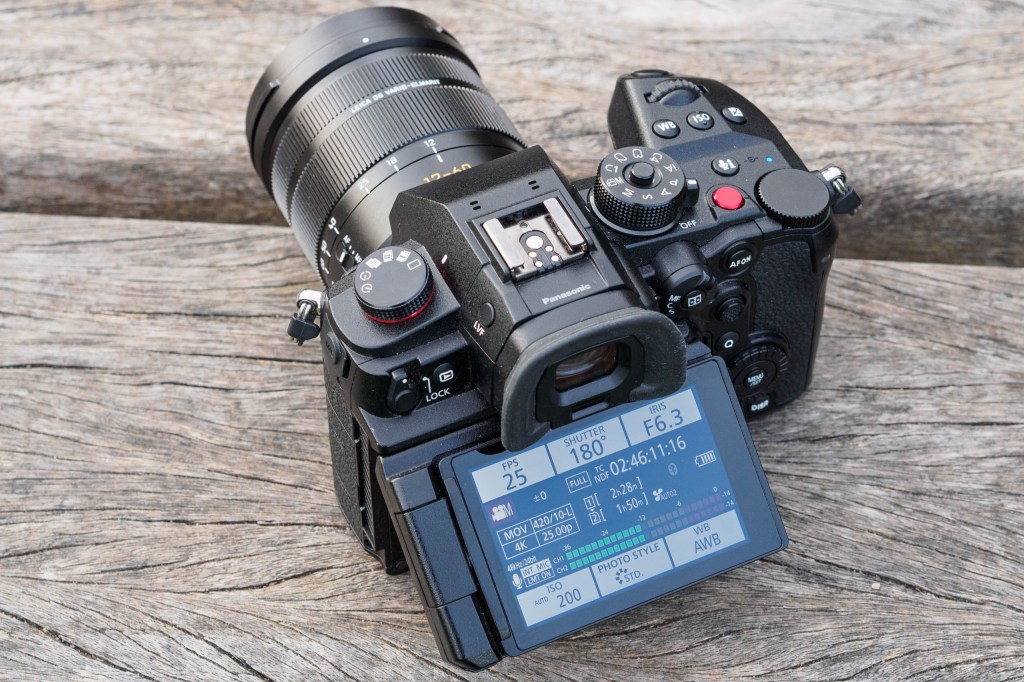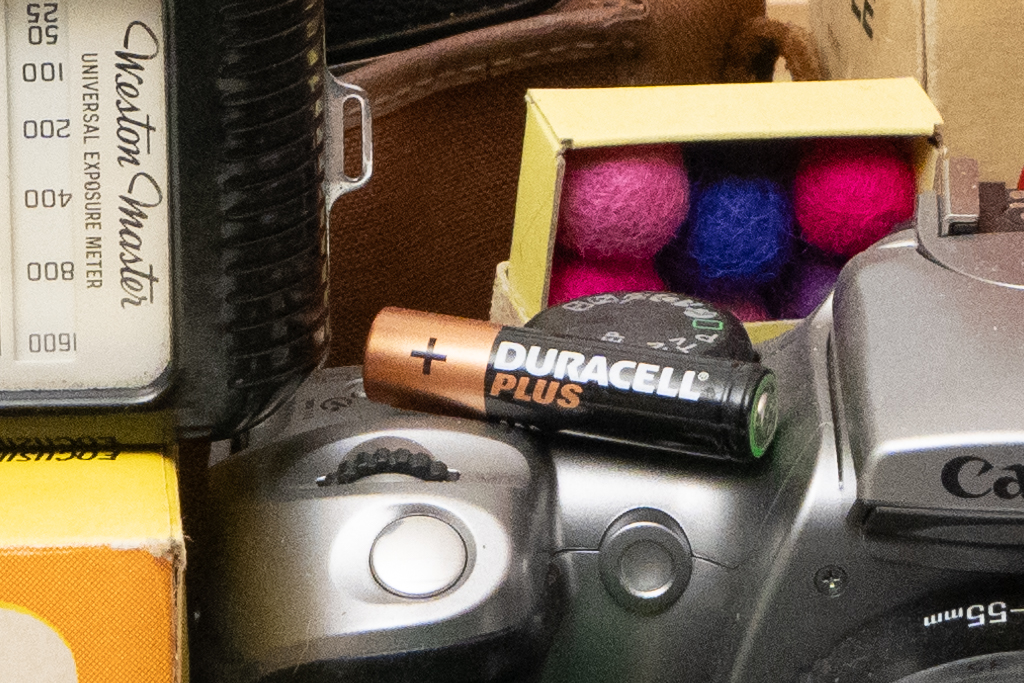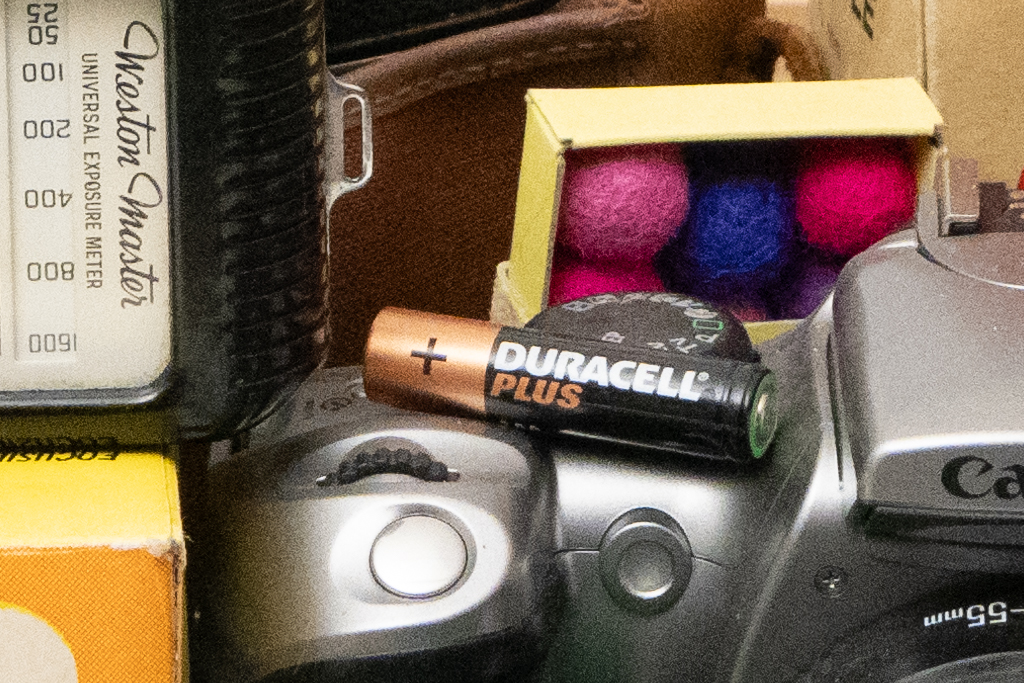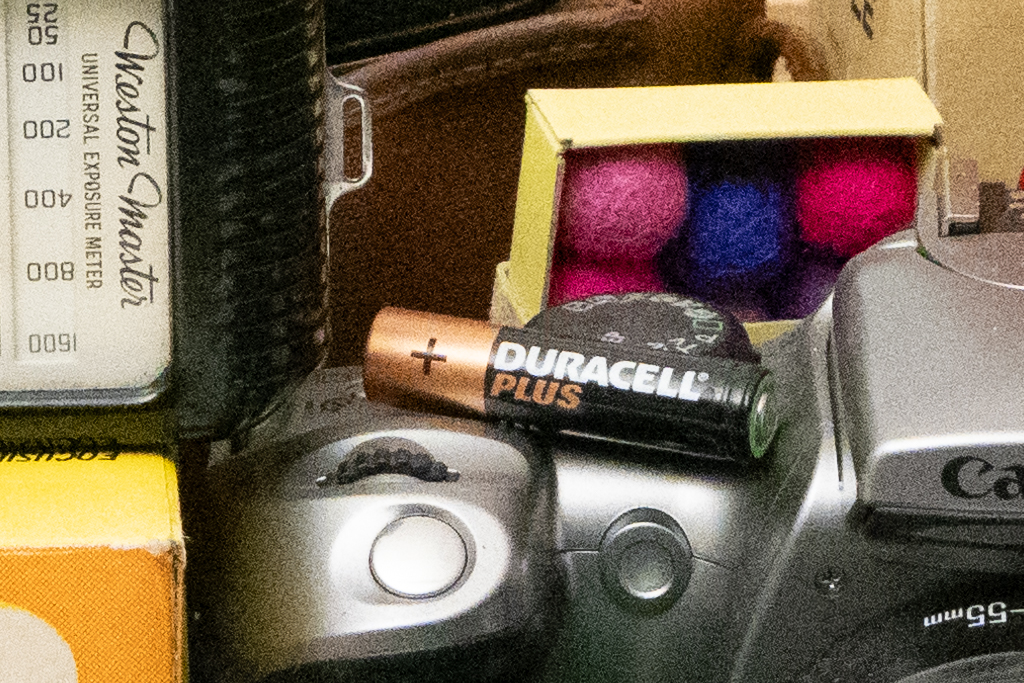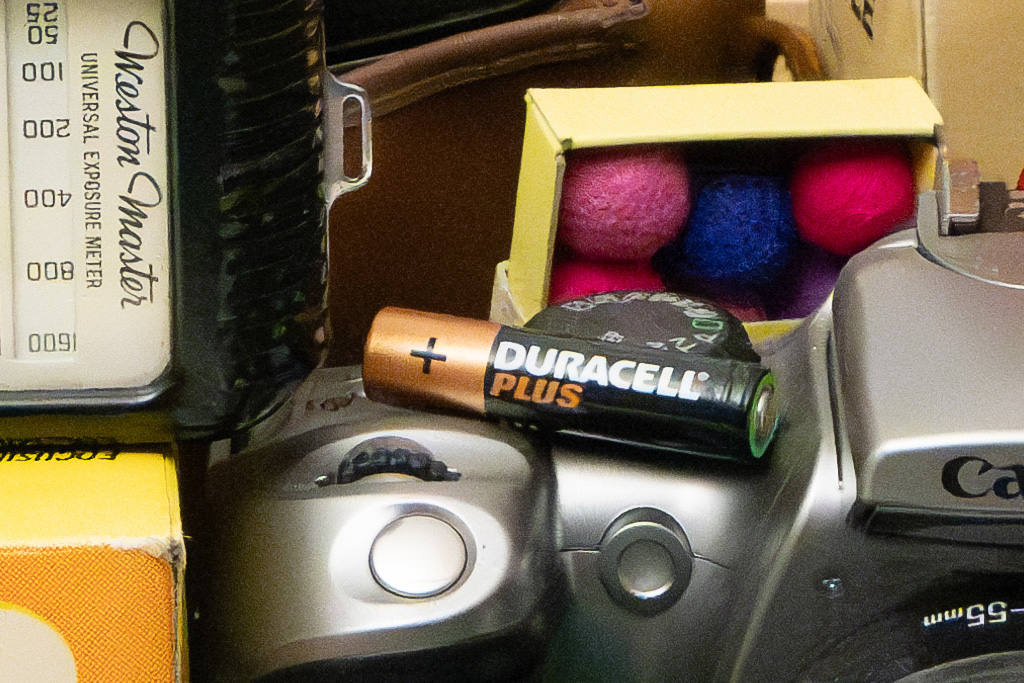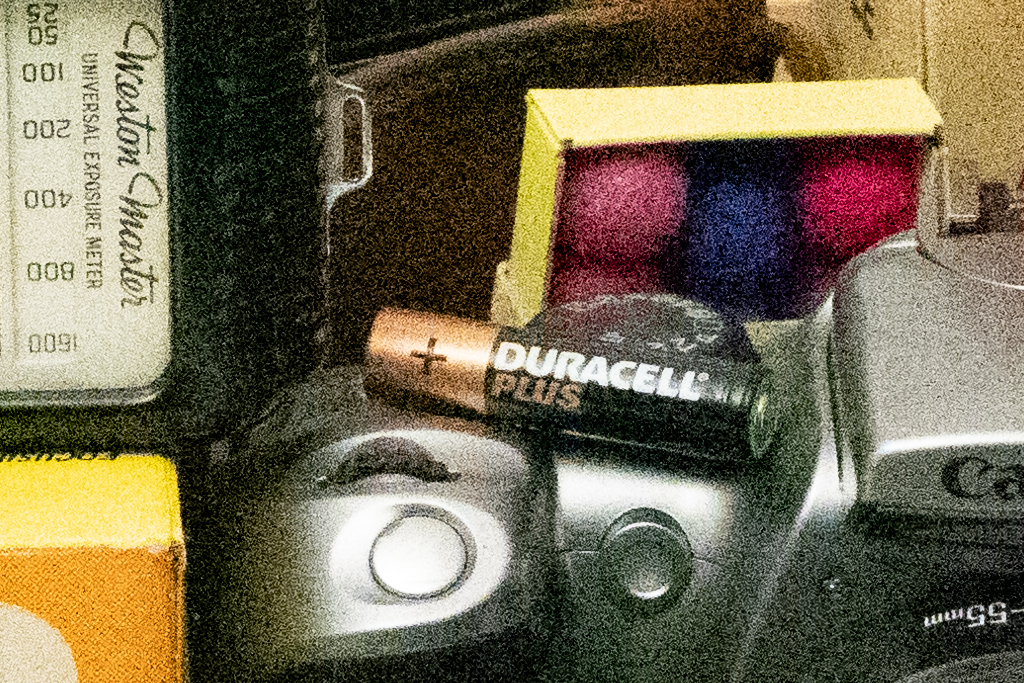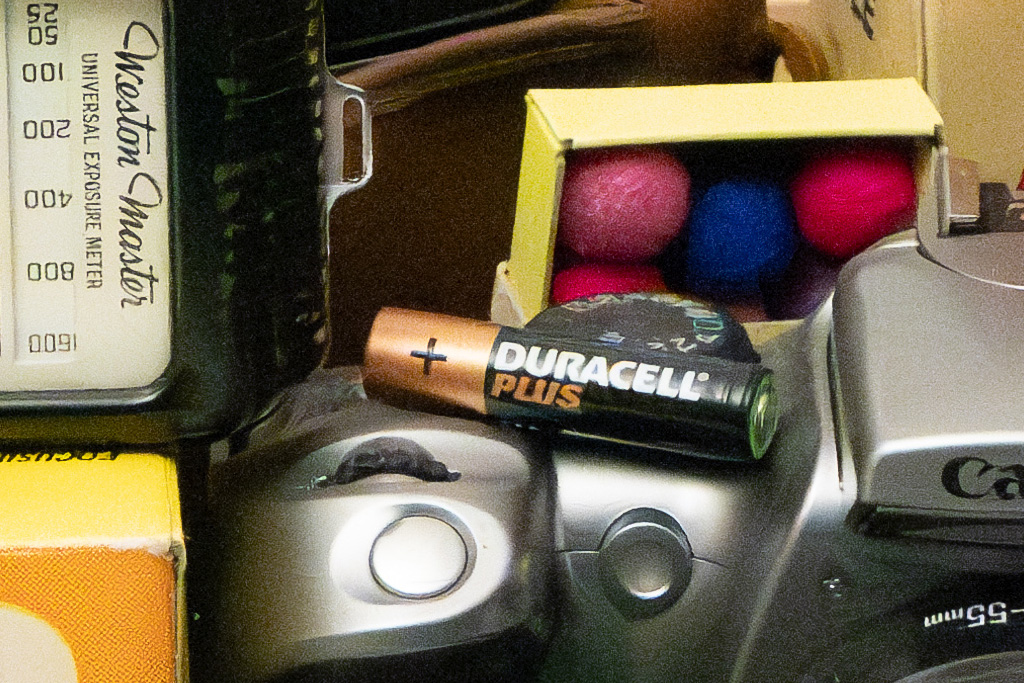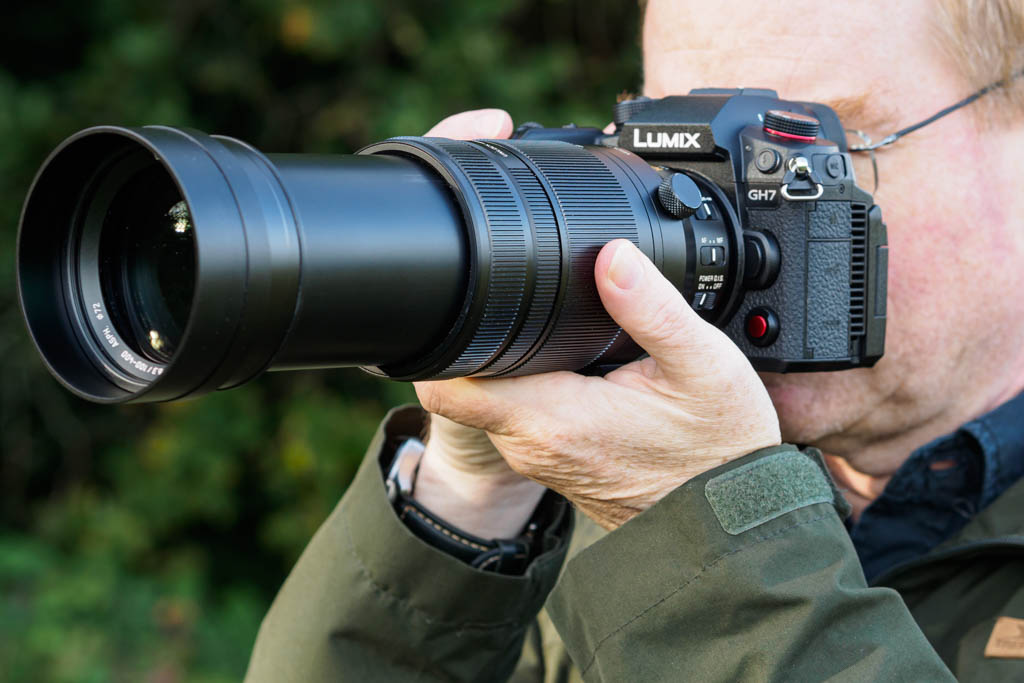Amateur Photographer verdict
The Panasonic Lumix GH7 is a superb hybrid camera for both stills and video. It offers the same excellent handling and advanced video features as the GH6, but gains significantly improved autofocus.- Transformed autofocus thanks to phase detection and updated subject recognition
- Excellent handling and control layout
- Superb in-body image stabilisation
- Vast range of video formats and high-end features
- Practically unlimited video recording times
- No automatic subject-type selection
- Slightly bulky body
- Lower dynamic range than larger-sensor cameras
The Panasonic Lumix GH7 is the latest in the firm’s long-running line of video-centric Micro Four Thirds cameras. Indeed, the original GH1 was the first ever mirrorless model capable of recording video. Now, fifteen years later, the GH7 finally gains the update that users have been requesting for ages – phase detection autofocus. This has had a transformational effect on the firm’s other recent cameras, so its inclusion in the GH7 is genuinely exciting and should make it one of the best Panasonic cameras yet.
Panasonic Lumix GH7 at a glance:
- $2,200 / £2000 body-only
- $2,800 / £2,500 with 12-60mm F2.8-4
- 25.2MP BSI-CMOS Four Thirds-type sensor
- ISO 100-25,600 (standard)
- Up to 75fps shooting
- 3.68m-dot, 0.8x OLED viewfinder
- 3in, 1.84m-dot fully articulated/tilting LCD
- 5.7K 60fps, C4K 120fps, FHD 240fps video
- 5-axis in-body stabilisation, 7.5 stops
That’s not all that’s new, though. While the GH7 uses exactly the same body design as its predecessor, the Lumix GH6, it gains some other significant updates. For example, its subject recognition system gains the ability to recognise trains and planes, bringing it closer into line with other brands. For video there’s now ProRes support, plus enhanced audio recording via the new DMW-XLR2 mic adapter.
Unsurprisingly, the GH7’s new capabilities come at a price. At £1999 body-only at launch, it costs about half as much again as the GH6’s street price, and significantly more than the Lumix G9II, its more photo-focused sibling. This places it in the same ballpark as its main Micro Four Thirds rival, the OM System OM-1 Mark II, and Fujifilm’s APS-C hybrid, the X-H2S.
However, the GH7 actually costs more than Panasonic’s video-specialist full-frame Lumix S5IIX, which could be problematic given the current obsession with full-frame cameras. But does the GH7’s unique combination of strengths justify its price?
Panasonic Lumix GH7: Features
While the GH line is generally seen as being a video specialist, it’s worth remembering that the ‘H’ actually stands for ‘hybrid’. As such, the GH7 is no slouch when it comes to photography, taking on board all the same features and capabilities as the excellent Lumix G9II. However, it’s built around a new 25.2MP sensor, which now employs a backside-illuminated BSI-CMOS architecture.

Most of the key photographic specs are shared with the GH6 and G9II. At 17.3mm x 13mm, that 25.2MP Four Thirds sensor is about 60% of the area of APS-C, or a quarter of full-frame. It offers a standard sensitivity range of ISO 100-25,600, with extended lower settings down to ISO 50. Shutter speeds cover a range of 60 seconds to 1/8000sec, or as fast as 1/32,000sec using the electronic shutter.
Continuous shooting is particularly impressive, at up to 75fps with focus fixed, and 60 frames per second with continuous autofocus, when using the electronic shutter. Switch to the mechanical shutter and this drops to 14fps in AFS, and 10fps in AFC. The buffer is huge, numbering at least 165 frames regardless of shooting speed. You also get pre-burst shooting for capturing unpredictable action where you normally wouldn’t have time to react.
The sensor includes Panasonic’s Dynamic Range Boost, which employs parallel readouts to deliver a promised dynamic range of 13 stops in both stills and video. This goes some way to alleviating one of the perceived disadvantages of the Micro Four Thirds sensor. However, this feature isn’t active when shooting at 60fps or faster, or at shutter speeds slower than 1/15sec.
Autofocus employs the same phase-hybrid system as used by Panasonic’s other recent cameras. The subject detection can recognise and focus on trains and airplanes, as well as people, animals, cars, motorcycles, and prioritise the most important feature such as the front window of a train. But there’s no automatic subject-selection option, so you have to tell the camera what you’re going to be shooting in advance.
In-body image stabilisation is onboard to reduce image blur when shooting hand-held. This works in concert with the firm’s optically stabilised lenses and is rated for up to 7.5 stops of shake suppression.
Panasonic has also included its high-resolution multi-shot mode, which, unlike with most other brands, is actually worth using. Aside from anything else, it’s really easy to access from the drive mode dial. There’s a choice of hand-held super-resolution or tripod-based pixel-shift modes, and a composite raw file is generated directly in the camera, rather than requiring processing by a computer afterwards.
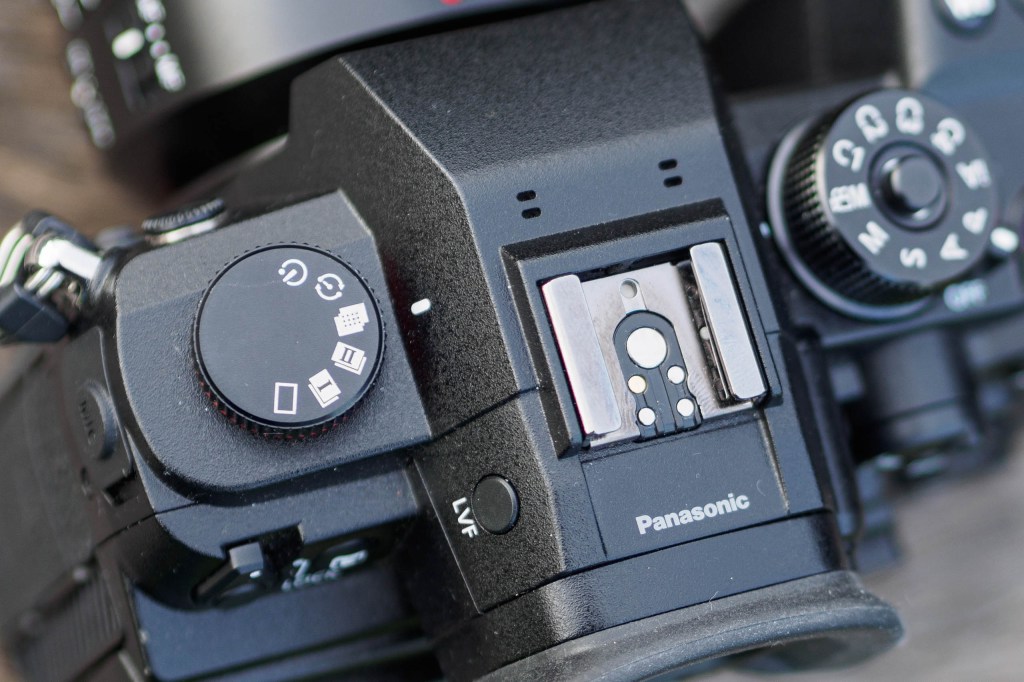
It’s possible to create JPEG files in-camera at either 50MP or 100MP, and there’s an option to suppress ghosting effects with moving subjects. So if you’re concerned 25MP isn’t high enough resolution for you all the time, this could be a useful workaround.
Panasonic Lumix GH7: Video features
Where the GH7 really stands out, though, lies with its video capabilities. It offers a vast range of options in terms of resolution, framerate, aspect ratio, colour depth, encoding schemes and file formats. You can shoot anything from ‘open gate’ 4:3 aspect ratio 5.8K at 30fps, though 17:9 5.7K at 60fps and C4K at 120fps, to 16:9 Full HD at 240fps. If there’s any option in between you want to use, it’s sure to be available – Panasonic’s spec sheet lists no fewer than 160 possible combinations.
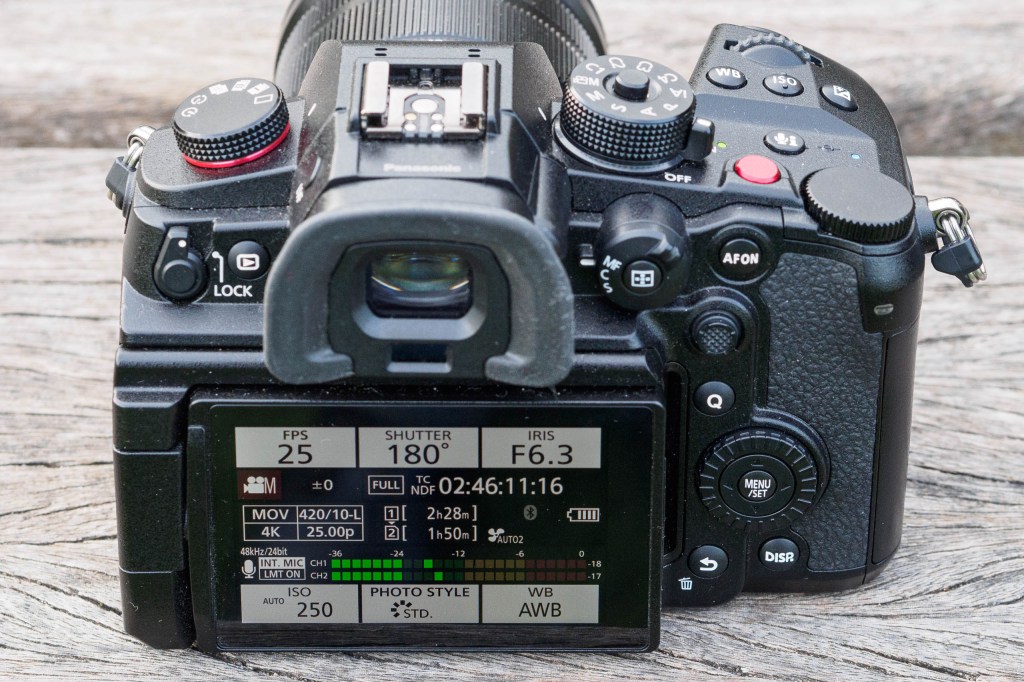
Video can be recorded internally in both ProRes 422 HQ and ProRes RAW formats for later post-procssing, with MP4 and MOV also on offer depending on how you wish to edit and view your recordings. The highest-quality options can only be saved internally to the camera’s CFexpress Type B card slot, and not to SD, but it’s also possible to record directly to an external USB-C SSD. This can be a godsend if you need to pass files to somebody else for editing.
Panasonic has also included its Real-time LUT feature for colour grading. This is works in concert with the Lumix LAB smartphone app, which is specifically designed for downloading LUTs and transferring them to the camera, and outputting finished video. For those who’d prefer a more conventional camera control app, the GH7 also works with Lumix Sync.
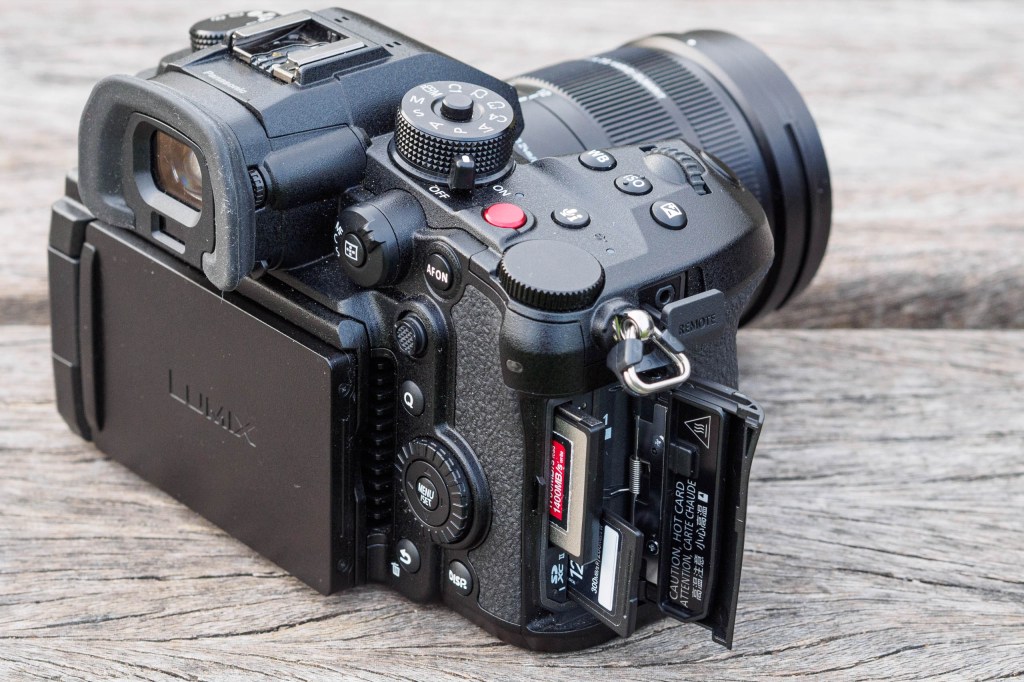
Physically, the camera includes a number of video-specific features, too. It has red tally lights on both the front and rear to indicate when it’s live, a built-in fan that promises practically unlimited recording times, and an additional red start/stop button on the front, as well as one on the top. A dedicated button on the top-plate gives quick access to audio settings, too.
On the subject of audio, uniquely the GH7 can record 4-channel 32-bit float audio, via the optional DMW-XLR2 microphone adapter (£499). This allows it to encode faithfully an extremely wide range of sound levels from whisper-quiet to extremely loud. The practical advantage is that you’re less likely to end up with distorted audio by setting your in-camera gain too high.
A standard 3.5mm stereo audio input is still included, which records conventional 24-bit sound and can operate at either mic or line-level.
There’s an array of interface options to aid videographers, including the option to work in terms of shutter angle rather than shutter speed. Waveform and Vectorscope displays are both available to help analyse exposure and colour balance. For those who’d like to use anamorphic lenses, a desqueeze display option is on hand to give an undistorted widescreen view.
Useful productivity features include the option to record low-resolution proxy footage for editing, and Camera to Cloud integration via Adobe’s Frame.io. This enables recorded videos to be backed up and shared among a production team. The GH7 also supports both wireless and wired live streaming, with the latter requiring a third-party USB-C ethernet adapter.
Panasonic Lumix GH7: Key features
- Built-in fan: The fan on the back promises unlimited video recording times at ambient temperatures up to 40 °C
- Audio: Using the optional DMW-XLR2 adapter, 4-channel 32-bit float audio recording is available, making it easier to deal with a wide range of sound levels
- Power: The DMW-BLK22 battery is rated for 280-360 shots per charge, or 80-90 minutes of video, depending on the recording media in use
- Media: Along with card slots for CFexpress Type B and UHS-II SD, the GH7 can record directly to a USB-C SSD
- Connectors: The camera is fully equipped with headphone/line, microphone, full-size HDMI, USB-C, and electronic remote release ports
- Micro Four Thirds: A vast range of lenses is available from Panasonic and Olympus/OM System, including premium optics that are smaller and lighter than those for larger sensor systems
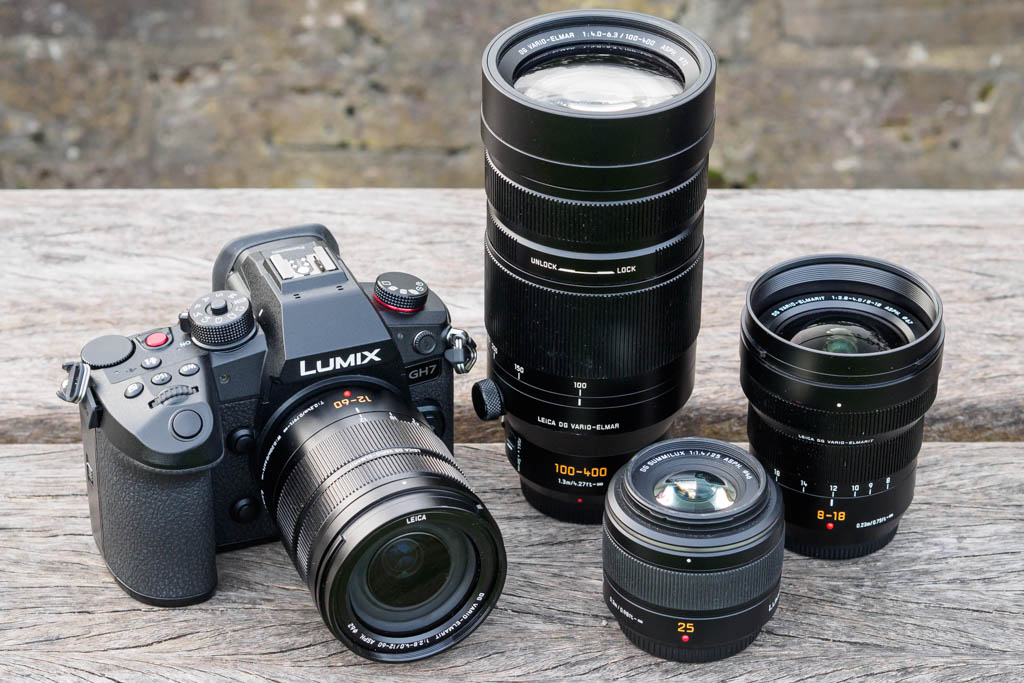
Panasonic Lumix GH7: Build and Handling
In terms of design, the Panasonic Lumix GH7 looks exactly like the GH6. This means it’s a fairly large, chunky camera, particularly in terms of front-to-back depth due to the inclusion of a cooling fan behind the sensor. On paper it’s slightly lighter than the GH6, at 805g vs 823g, but that’s not going to make much practical difference. However it’s noticeably larger and heavier than the G9II – see the slideshow below for a side-by-side comparison.
Some might complain that the body is too large for Micro Four Thirds, as if a camera’s dimensions should scale directly with those of its sensor. But I don’t think this makes much sense. A camera needs to be a certain size to handle well and have space for a full set of external controls. You can still save significantly in terms of the weight you carry thanks to the system’s smaller lenses, particularly compared to a full-frame step.
In use, the GH7 feels great in your hand, with a large comfortable hand grip and a well-defined space for your thumb. It has pretty much all the same controls as other high-end Panasonic cameras in essentially the same places, so existing users will have no trouble adapting. Like other Lumix cameras, I found that once I’d got it set up to my liking, it’s a real pleasure to shoot with.
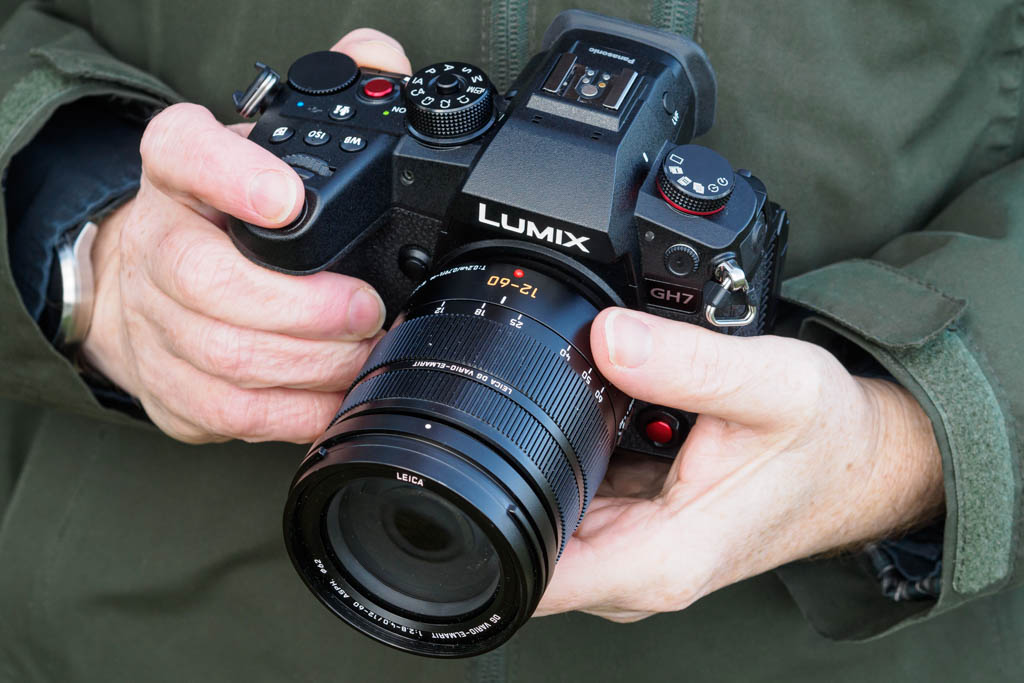
You get no fewer than three electronic dials for changing exposure settings, with a row of three buttons behind the shutter release for setting white balance, ISO and exposure compensation. By default, the front dial and top thumb dial do the same things, except in manual exposure mode, where they set the aperture and shutter speed, respectively. Meanwhile, the back wheel adjusts the headphone volume.
However, Panasonic has included lots of options for reassigning the dials to suit your needs. Personally, I set exposure compensation onto the thumbdial and ISO onto the back wheel.
A cluster of three control points looks after focusing. There’s a large AF-ON button beneath your right thumb, and a joystick for selecting the focus point below it. Closer to the viewfinder, you’ll find a switch for selecting between single-shot AF, continuous AF and manual focus, with a button in its centre for the focus area mode and subject detection settings. It’s all very logical and straightforward to use.
On the top left, there’s a dial for selecting the drive mode. This gives quick access to the self-timer, intervalometer, high-res multi-shot, and continuous shooting, with separate positions for using the mechanical and electronic shutters. In each of these modes, detailed settings can be changed by pressing the Q button. Overall, I have to say that the GH7 has an excellent control setup for photographers.
However, this brings me onto a long-running Panasonic quirk. Unlike most other brands, there’s no switch to select between still and video shooting. Instead, a Creative Video position on the mode dial gives access to all the advanced video settings. As a result, operationally the GH7 feels very much like a stills camera with a movie mode tacked on afterwards, which is strange for such a video-centric model.

Out of the box, all the exposure settings are shared between stills and video, which almost certainly isn’t what you’ll want. Fortunately, there’s a menu setting that allows you to separate then out, although it’s distinctly obscurely named (“CreativeVideo Combined set”). You can also save your own preferred video setups to any of the four Custom positions on the mode dial for quick recall.
Another apparent oddity is that the red record button on top is horribly positioned for use when you’re holding the camera normally. But it turns out that’s fine, as in the manual video mode, you can use the shutter button instead. That top button is, however, perfectly positioned when you’re holding the camera in your left hand and pointing it back towards you.
Likewise, the front record button is great to have if you’ll frequently be recording yourself with the camera on a tripod. The flipside is that I found myself inadvertently pressing it all the time when holding the camera to change settings or play back images, and repeatedly found myself recording short video clips by accident. Thankfully you can disable it (and the top button) in the stills shooting modes.

I really appreciated having those red tally lights on both the front and back, as they make it immediately obvious when the camera is recording. It’s amazing that more cameras don’t include them. You can turn either of them off if necessary, for example when filming an event.
Panasonic Lumix GH7: Viewfinder and screen
For composing and viewing your images, Panasonic has used a similar setup to the G9II and the S5II twins. So while the electronic viewfinder has the same 3.68m-dot resolution as the GH6, it’s slightly larger, at 0.8x magnification rather than 0.76x. That’s not a huge difference, but it’s welcome, nonetheless.
The viewfinder gives a nice, detailed view, while providing an accurate indication of how your images are going to turn out in terms of colour and exposure. Depth-of-field preview is available via a button on the front, with Panasonic uniquely also providing a shutter speed preview on a second press of the same button. This can be really useful for previewing motion blur when you’re shooting with longer shutter speeds.
One area where the GH6/GH7 design differs from its Lumix siblings lies with the additional flexibility of the rear LCD screen. This still uses a side-hinged fully articulating design, but it’s mounted on a sturdy tilting mechanism that can be angled upwards by 50°, with another firm click-stop at the 30° mark.
This is particularly helpful for shooting video, as it allows you to look down on the screen free of obstruction by any cables (HDMI, USB-C, microphone or headphones). It’s also great for unobtrusive waist-level photography. However, unlike the similar design on the Sony A7R V, the screen doesn’t tilt downwards for overhead shooting, at least without swinging it out to the side.
Panasonic Lumix GH7: Autofocus
A few years ago, Panasonic cameras had a reputation for sup-par continuous autofocus performance, due to their reliance on Depth-from-Defocus technology. But when the firm adopted phase detection in the S5II at the start of 2023, it rapidly became clear that this was a thing of the past. Now the firm has also brought its subject recognition system broadly into line with its competitors, so on paper, the GH7’s autofocus should be a close match to its peers.
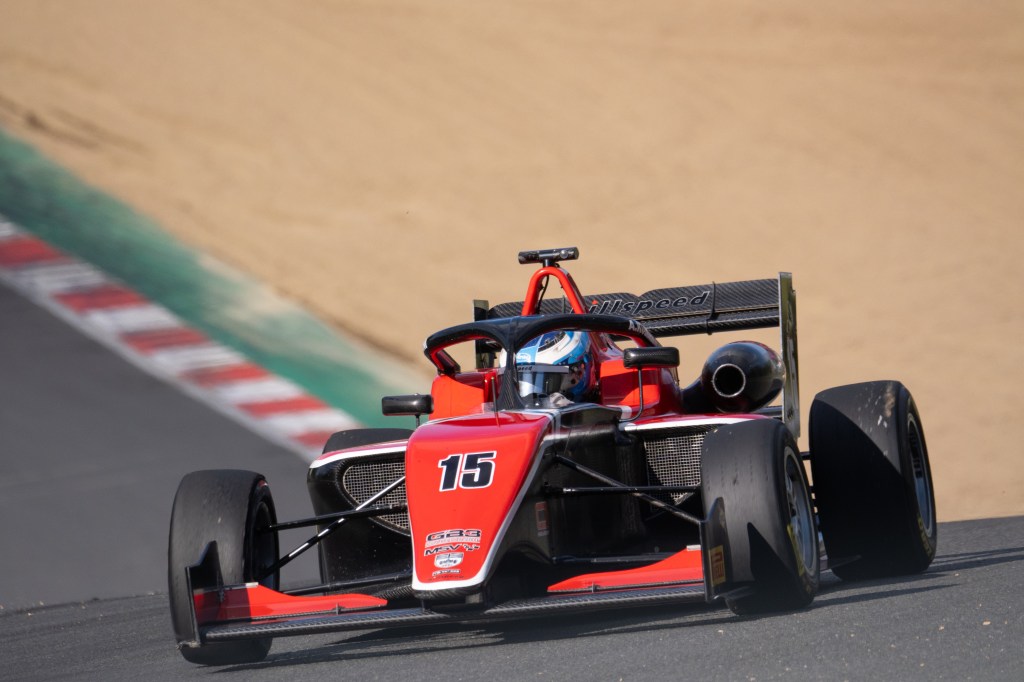
Click on any sample image to see the full resolution version
I tested the GH7’s autofocus across a wide variety of subject types and with a range of lenses, including the Panasonic Leica DG 100-400mm F4-6.3 Asph Power OIS and the Olympus M.Zuiko Digital ED 40-150mm F2.8 PRO telephoto zooms. My experience was generally very positive, with the camera recognising subjects quickly and accurately, and tracking them reliably as they move around the frame.
Shooting racing cars, I found GH7 can reliably track a single vehicle within a crowded field, and maintain focus even when they are approaching the camera at high speed. I got an extremely high hit-rate of in-focus shots using the mechanical shutter at 10fps, certainly well over 95%. Occasionally the camera failed to pick up focus for a burst, but not very often.
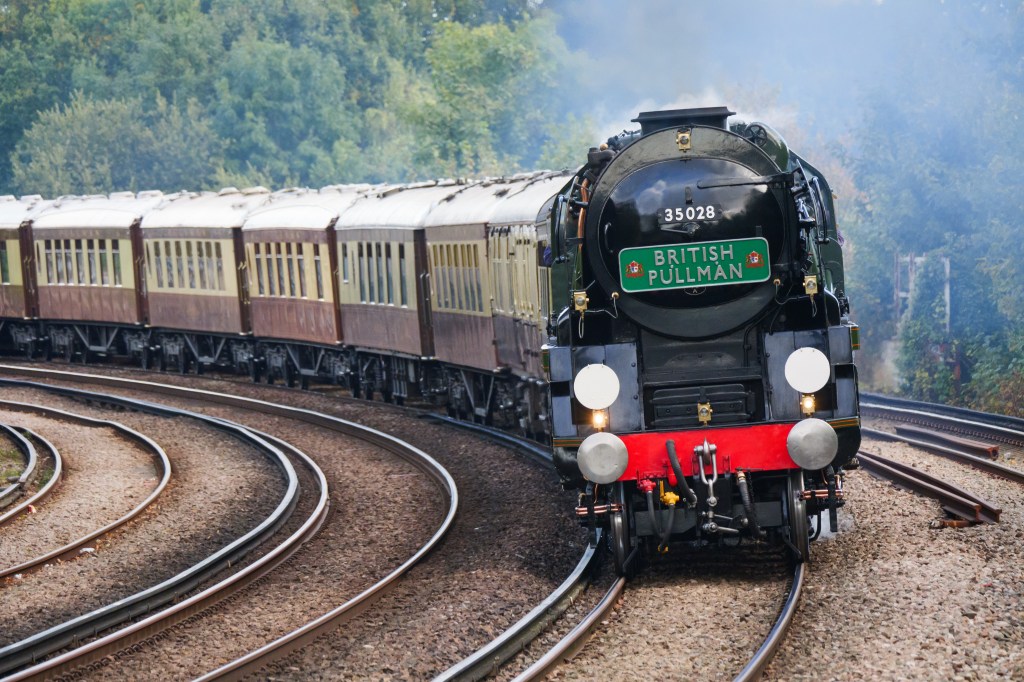
Switch to shooting at 60fps with the electronic shutter, and it can take fractionally longer for the camera to acquire focus. This means you can sometimes get a block of ten or more out-of-focus frames at the start of the burst. But again, once the focus has locked on, it’s impressively ‘sticky’.
I saw much the same story shooting trains, with the camera recognising both modern commuter trains and a vintage steam locomotive equally happily, and tracking focus on them reliably. Likewise it performed well shooting wildlife at a local park.
This also emphasised to me one of the biggest advantages of Micro Four Thirds, with the Leica DG 100-400mm zoom providing 800mm equivalent reach in a lens that’s easy to carry and hand-hold all day, as it weighs less than a kilogram.
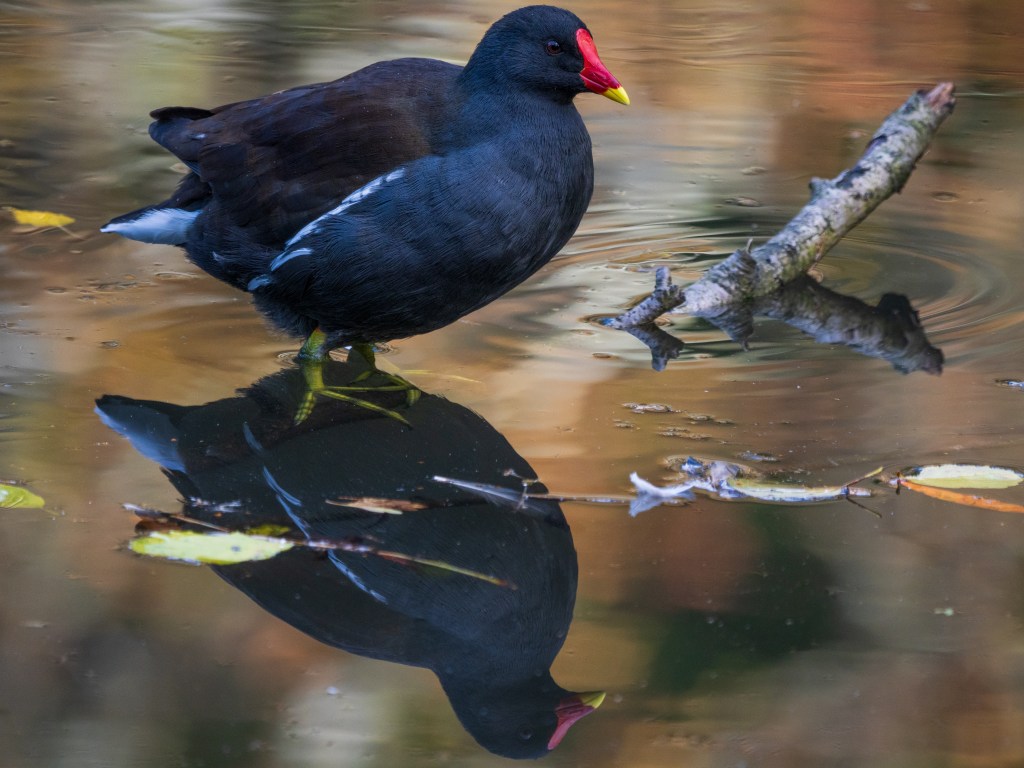
Crucially, the GH7’s autofocus is also dramatically improved for video recording. Its face and eye detection is reliable, so you can be confident it will keep a presenter in focus. But now there’s none of the distracting DFD background “shimmer” that plagued previous generations. Focus transitions are nice and smooth, too, for instance when holding up a product to the camera.
I do have a couple of gripes, though. Firstly, when there are multiple possible subjects of the same type in the frame, there’s no easy way to select between them. The lack of an automatic subject-selection mode is also disappointing. To be fair, though, the GH7 is far from the only camera that suffers from these flaws.
Panasonic Lumix GH7: Performance
Like other Panasonic cameras, the GH7 takes a few seconds to start up when you switch it on for the first time each day. But once that’s out of the way, it’ll fire up almost instantly when you flick the power switch. It then just keeps out of your way when you’re shooting, responding quickly and reliably to both the physical controls and the touchscreen.
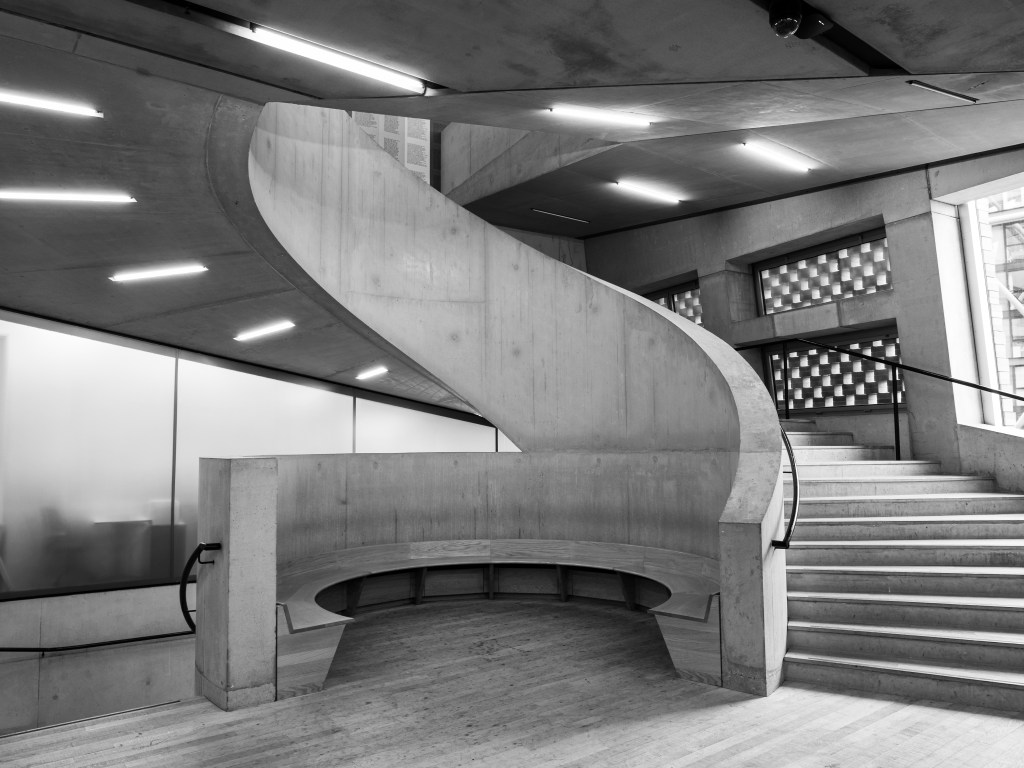
While the mechanical shutter isn’t hugely intrusive, it’s noticeably louder than other crop-sensor cameras from Olympus or Fujifilm. Switch to the electronic shutter and turn off the camera’s various audio signals, though, and it can be completely silent. Rolling shutter distortion is impressively low for a camera that uses a conventional, non-stacked sensor.
Panasonic quotes battery life of 360 shots per charge using an SD card, with this dropping to 330 shots using CFexpress and 280 with an external USB-C SSD. But as always, this only tells part of the story. The CIPA standard test is representative of shooting single frames at a time, and you’ll get vastly more when mainly shooting bursts. I got over 1800 shots from a single charge on one occasion.

Speaking of continuous shooting, the GH7 is impressively capable in this respect. It’ll happily rattle off 200-frame bursts at 10fps, or even 14fps with focus fixed. In practical use, I never hit a point where the camera filled its buffer and locked up on me.
As we’ve come to expect from Panasonic, image stabilisation is extremely impressive. Using the Panasonic Leica DG 12-60mm F2.8-4 ASPH OIS, I was able to get sharp images hand-held at shutter speeds as long as 2 seconds. The effectiveness isn’t limited to wide lenses, either; using the 100-400mm zoom at its long end, I got perfectly usable shots at 1/100sec.
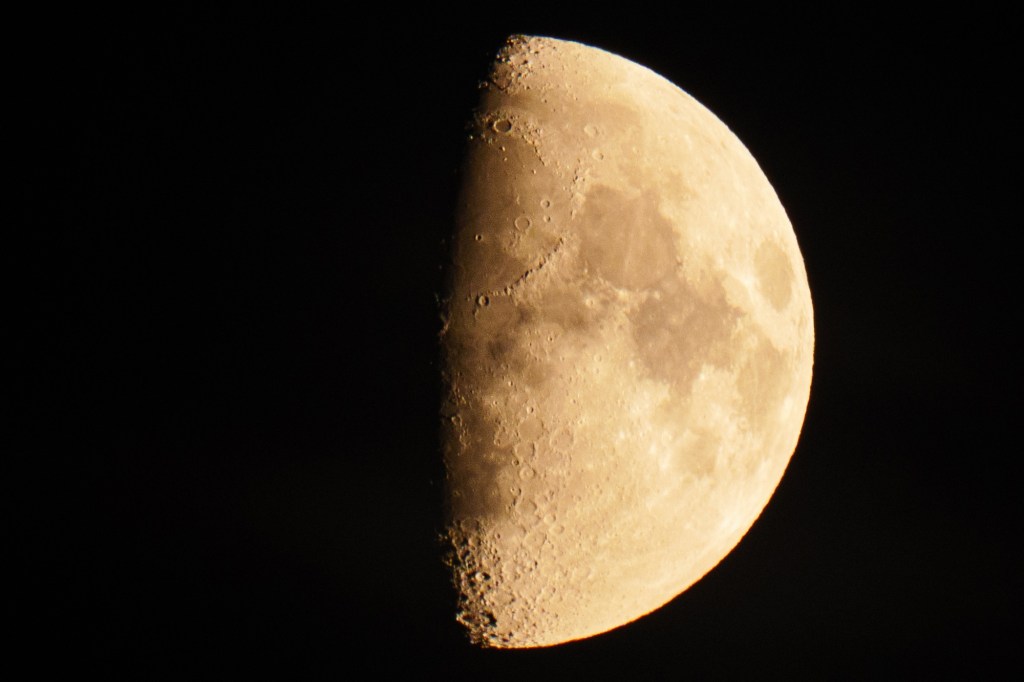
Stabilisation is equally effective for video. The IBIS does a great job on its own with normal hand-held shooting, while enabling electronic stabilisation goes further still, and effectively smooths out footage while you’re walking with the camera. Perhaps most impressive of all is the Boost IS, which gives almost tripod-like stability when you want to hold a shot completely still with no camera movements.
Where most brands’ high-resolution multi-shot modes seem to exist mostly for marketing purposes, Panasonic’s are actually worth using. Both the hand-held and tripod modes work consistently well, with the latter delivering slightly higher levels of detail. The motion blur suppression does a good job of detecting regions where there’s movement between frames and rendering them using single-shot data instead.
It’s just a shame that the hand-held and tripod modes share the same position on the mode dial and the same settings – for example, chances are you’ll want to set an exposure delay in tripod mode, to allow everything to settle down, but not when shooting hand-held.
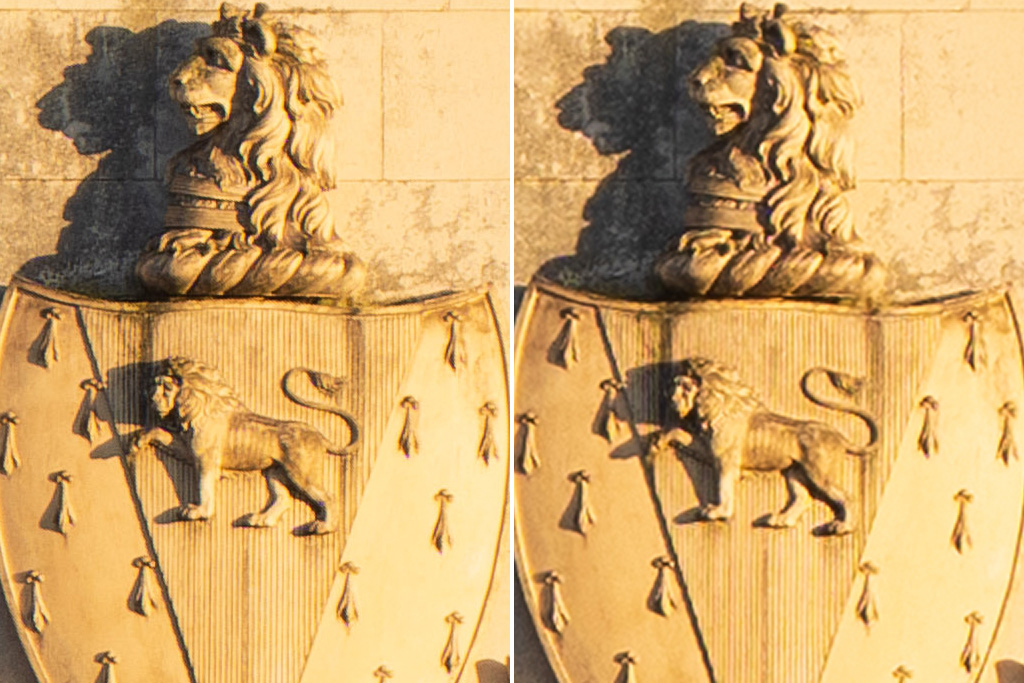
I found Panasonic’s metering to be generally reliable, with little reason to override the camera’s settings except for creative effects. Auto White Balance can err on the side of over-neutralisation though, so it’s worth keeping an eye out for this and considering using pre-sets instead.
I’m not a huge fan of Panasonic’s default colour processing, with the Standard Photo Style favouring colorimetric accuracy over an attractive interpretation of the scene. Switching across to Vivid gives punchier colour output, if you want it. But I suspect most serious users will shoot still images in raw, and colour-grade their video in post-processing anyway.
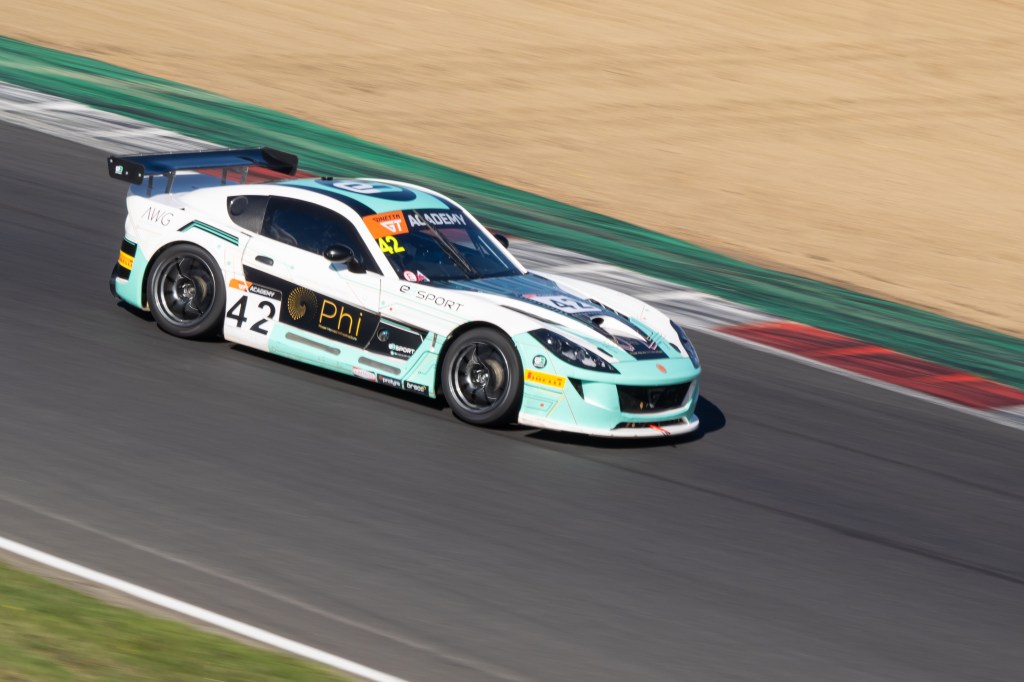
Ultimately, though, what will make or break the GH7 in the eyes of potential buyers is the image quality provided by the smaller Four Thirds sensor, particularly in terms of high-ISO noise and dynamic range. In this respect, the GH7 brings nothing unexpected compared to its 25MP siblings. I shot side-by-side comparisons with the G9II under controlled lighting, and the two cameras delivered indistinguishable results in terms of both noise and exposure latitude.
What this means is that, compared ISO-for-ISO, the GH7 gives noisier images compared to APS-C or full-frame cameras. There’s also less scope to recover detail from dark areas of the image, particularly in situations where Dynamic Range Boost isn’t active. If you try to pull up shadows by much more than three stops, you’ll find the data simply isn’t there. You’ll probably get a stop more from APS-C cameras, and maybe two stops more from the best 24MP full-frame sensors.
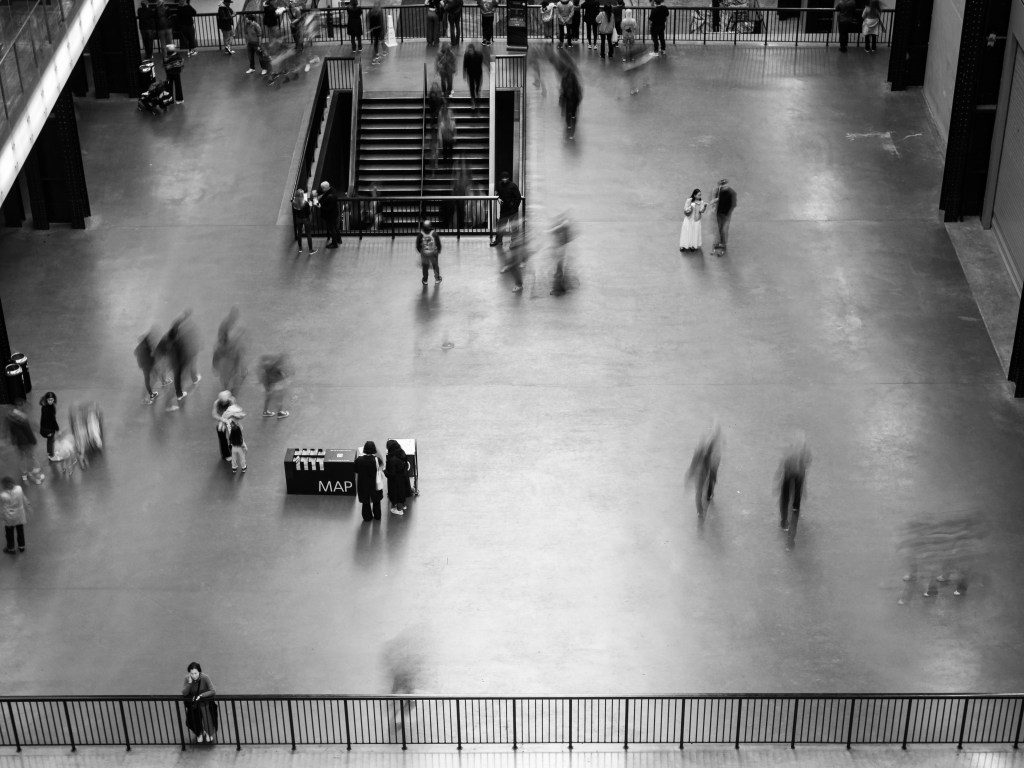
However, as I noted when I reviewed the G9II, for a great deal of the time this simply doesn’t matter. In many situations you’d struggle to distinguish stills or videos shot using the GH7 from those taken with the full-frame S5IIX. In good lighting conditions, the 25MP Four Thirds sensor gives extremely good results. It’s only when you push to the extremes of the shooting envelope that you can start to see a difference; for example in very low light, or when trying to control extreme contrast in one shot.
Panasonic Lumix GH7: ISO and Noise
With its 25MP Four Thirds sensor, the GH7 delivers results that are very much in line with the G9II and GH6. At low ISO settings, it can deliver every bit as much detail as APS-C or full-frame cameras with 24MP or 26MP sensors. Files are clean and free of noise; just bear in mind that the extended ISO 50 clips highlights a stop earlier than higher settings.

Noise starts to become obvious at lower ISOs compared to larger formats, though. By ISO 3200, most of the finest detail has been blurred away; however I’d still be quite happy shooting at ISO 6400. Higher ISO settings are very noisy indeed but clean up surprisingly well with AI software such as Adobe Denoise.
Below are 100% crops from our standard test scene, shot in raw and processed using Adobe Camera Raw at default settings. Click though the slideshow to see the various ISOs, and click on any thumbnail to see the full-size image.
Panasonic Lumix GH7: Verdict
After a couple of weeks testing the Panasonic Lumix GH7, I’ve been left in no doubt that it’s a truly superb camera. At almost goes without saying that any GH model will offer state-of-the-art video recording, but it’s equally accomplished at shooting stills, too. It offers all the same capabilities as the excellent G9II, and a little bit more besides.
Compared to the GH6, the addition of phase detection and much-improved subject detection brings a dramatic boost to its capabilities. Continuous autofocus and tracking performance are excellent for both stills and video, and match for many of its peers. Panasonic’s excellent user interface also makes it easier to configure the autofocus compared to some other brands, such as Sony and Fujifilm.
The big question, though, is whether a high-end Micro Four Thirds camera still makes sense in a market that’s become obsessed by full-frame. And it’s true that if you’re after super-shallow depth of field, or shoot a lot in low light, the limitations of the smaller sensor can become apparent. The rest of the time, though, you’ll get equally good results while carrying around smaller and lighter kit.

Indeed the real advantage of Micro Four Thirds comes with lens selection. There’s a huge range of compact, optically excellent lenses available, including both Panasonic Leica DG optics and the Olympus/OM System PRO range. You can cover huge focal-length ranges, and super-telephoto reach in particular, at reasonably affordable prices and without excessively weighing down your bag. Careful lens selection can also narrow that capability gap with larger formats – for example by using Panasonic’s unique f/1.7 zooms.
Ultimately, no other camera can quite match the GH7’s combination of advanced video features and system portability. Having said that, photographers who don’t have such specialist video needs will find the G9II offers the same image quality at a lower price. But for those shooting both high-end video and stills, the GH7 is a really compelling proposition.

Follow AP on Facebook, Instagram, YouTube and TikTok.
Panasonic Lumix GH7: Full Specifications
| Sensor | 25.2MP BSI-CMOS, 17.3 x 13mm |
| Output size | 5776 x 4336 |
| Focal length mag | 2.0x |
| Lens mount | Micro Four Thirds |
| Shutter speeds | 60 – 1/8000sec + B |
| Sensitivity | ISO 100-25,600 (standard), ISO 50-25,600 (extended) |
| Exposure modes | PASM, Auto, Video, C1-C4 |
| Metering | Multi / Centre-weighted / Spot / Highlight-weighted |
| Exposure comp | +/-5 EV on 0.3EV steps |
| Continuous shooting | 75fps (electronic/AFS); 60fps (electronic/AFC); 14 fps (AFS); 10fps (AFC/live view) |
| Screen | 3in, 1.84m-dot LCD touchscreen |
| Viewfinder | 3.68m-dot, 0.8x OLED, 120fps / 60fps |
| AF points | TBC |
| Video | 5.7K 60fps, C4K 120fps; FHD 240fps |
| External mic | 3.5mm stereo, 4-channel 32-bit float via DMW-XLR2 |
| Memory card | CFexpress Type B, UHS-II SD; USB-C SSD |
| Power | DMW-BLK22 rechargeable Li-ion |
| Battery life | 360 (SD), 330 (CFe), 280 (SSD) |
| Dimensions | 138.4 x 100.3 x 99.6 mm |
| Weight | 805g (inc battery and SD card) |

